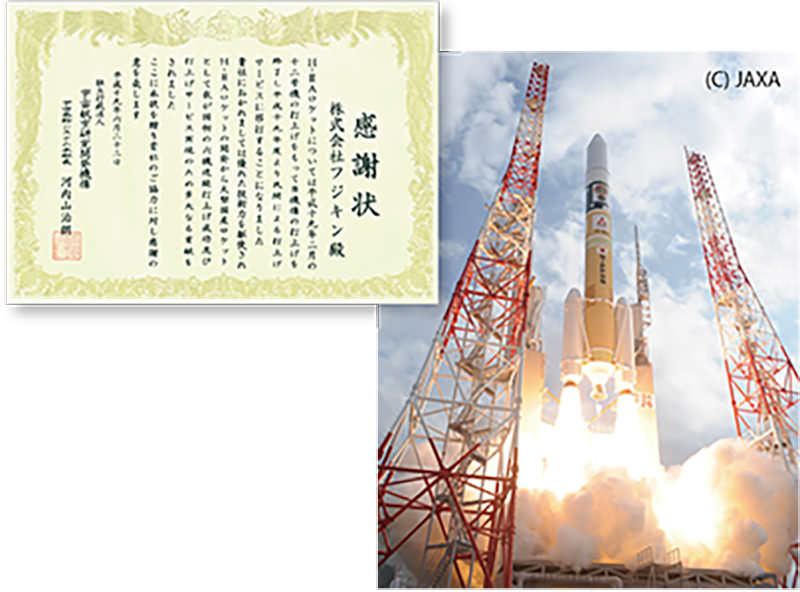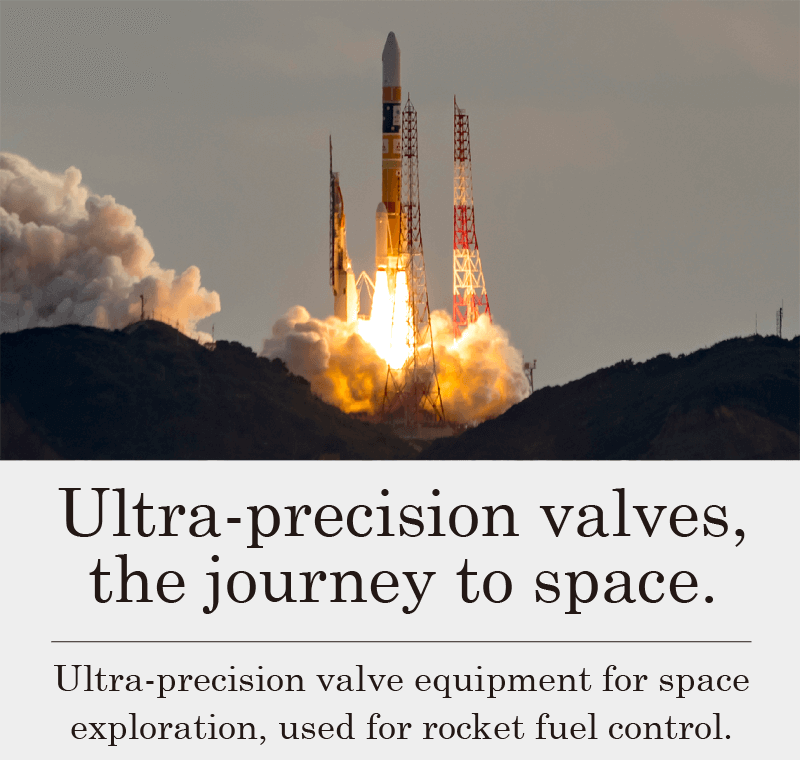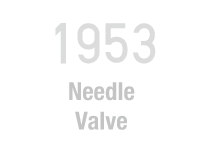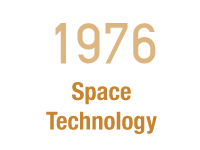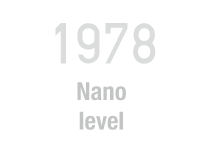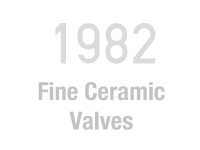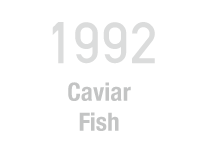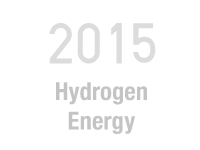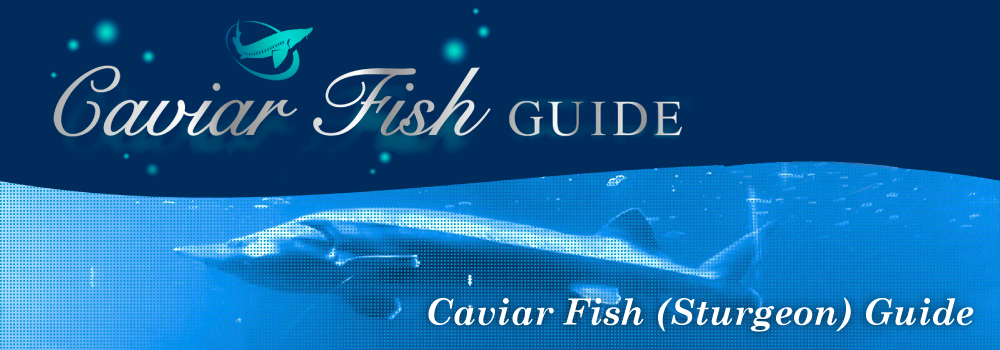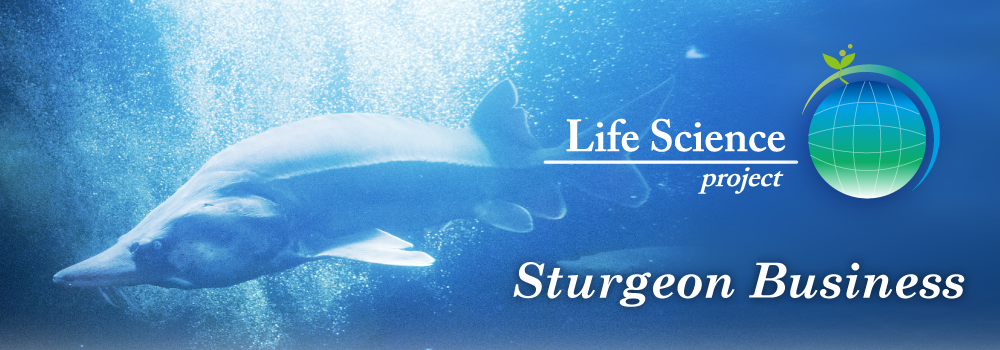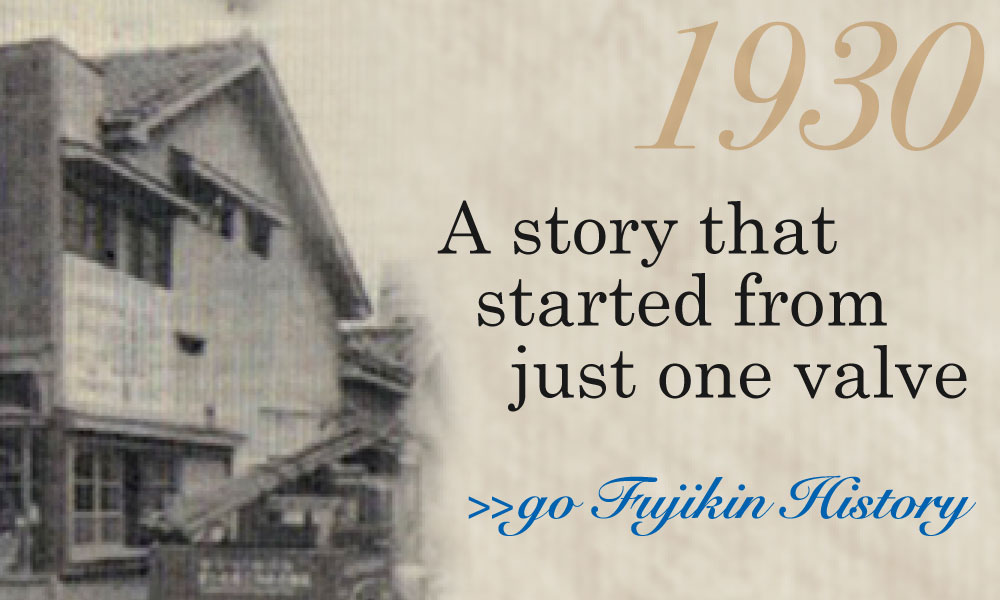Cryogenic Space Technology
Fujikin's ultra-precision valves have played a role in the remarkable progress of space exploration.
In April 1955, Professor Hideo Itokawa from the Tokyo University Institute of Industrial Science performed launch experiments with his ultra-small (23 cm high, 202 g) "Pencil Rocket," which signaled the beginning of space exploration to Japan.
60 years on, Japan has the large-scale H-IIA Rocket with a height of 53 m and weight of 289 t. The improved H-IIB Rocket has a height of 56 m and weight of 531 t and possesses the ability to launch 16.5 t of cargo into low orbit. Fujikin's ultra-precision valve equipment has been deeply involved in the remarkable progress of Japan's space exploration technology.
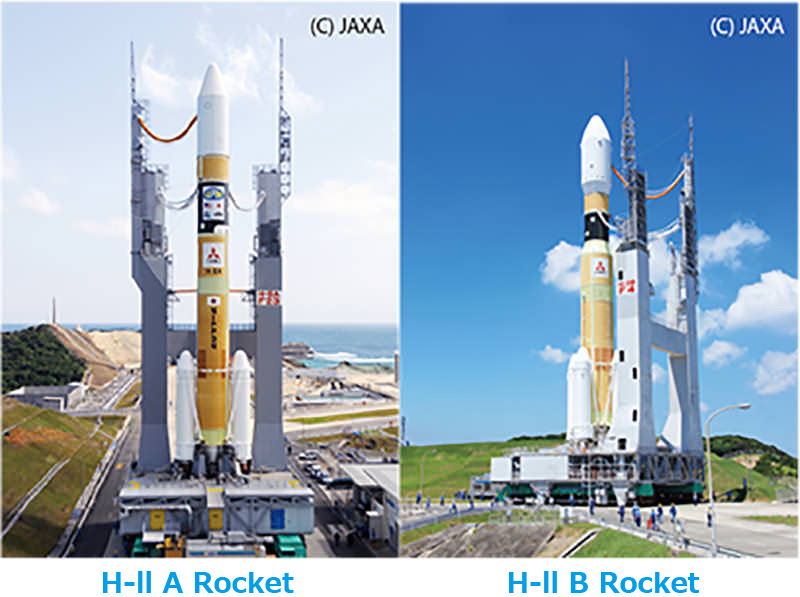
Fujikin was entrusted by the space development agency NASDA (currently known as the Japan Aerospace Exploration Agency, JAXA) to install the industry's first clean room, and in 1976 development started on valves for space exploration. These valves helped in the transition to Japanese technology for space rockets, which previously relied on technology from overseas.
Liquid fuel rockets use liquid hydrogen at a temperature of -253 °C and liquid oxygen at -183 °C, requiring valves that can control and operate at ultra-low temperatures. Two issues were problematic for valves: the high pressure used during fuel loading and the way that hydrogen degraded valve materials. A solution was required for these problems.
To overcome such large problems, in 1978 Fujikin developed valve equipment for space exploration in test devices for liquid oxygen / liquid hydrogen engines. Since then, every fuel test facility, launch facility and rocket has, one after another, adopted Fujikin's valve equipment.
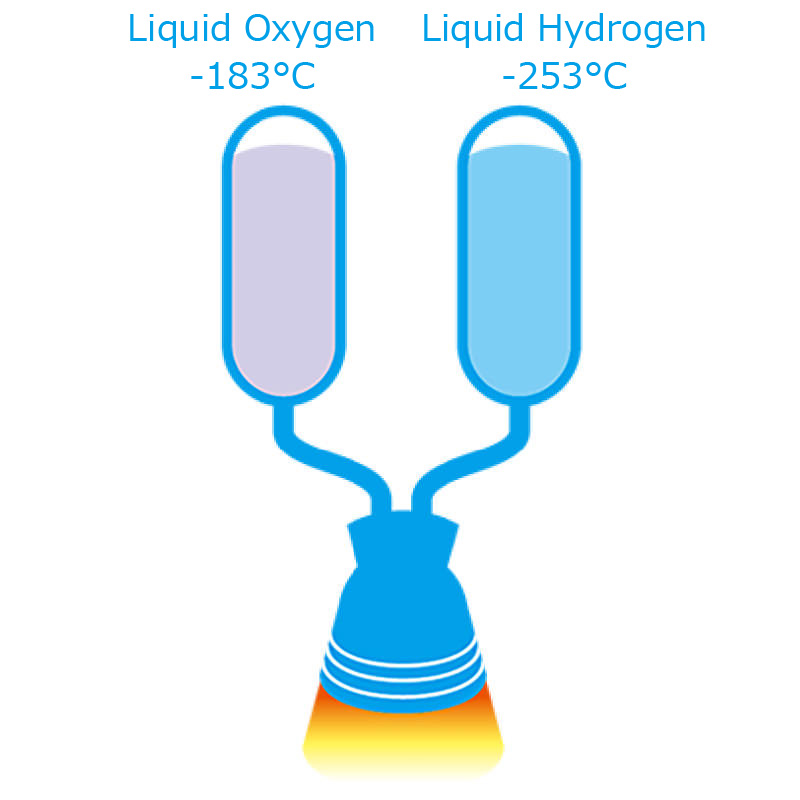
Fujikin's valve equipment will further expand and accompany the development of space exploration.
For example Fujikin developed a valve for apogee engines that supply and cut off fuel for the trajectory of geosynchronous satellites that are launched from rockets. To prevent misoperation, we developed a special lock mechanism and used electron beam welding to prevent external leakage, which resulted in a reliability estimate of 99.9999%.
In the field of manned spaceflight, on the space shuttle "Endeavour," Japanese astronaut Mamoru Mori performed an experiment on the "space sickness of carp" and the first Japanese woman astronaut, Chiaki Mukai, performed an experiment using Fujikin's flow control equipment on the space shuttle "Columbia" during the "International Microgravity Laboratory IML-2" mission.
Recently, on the International Space Station (ISS), Fujikin's check valve has been adopted in the air conditioning equipment used in Japan's manned experiment module "Kibo." This equipment is used to prevent the reverse flow of air circulation and plays an important role in controlling the atmosphere to provide a safe and comfortable environment for the astronauts.
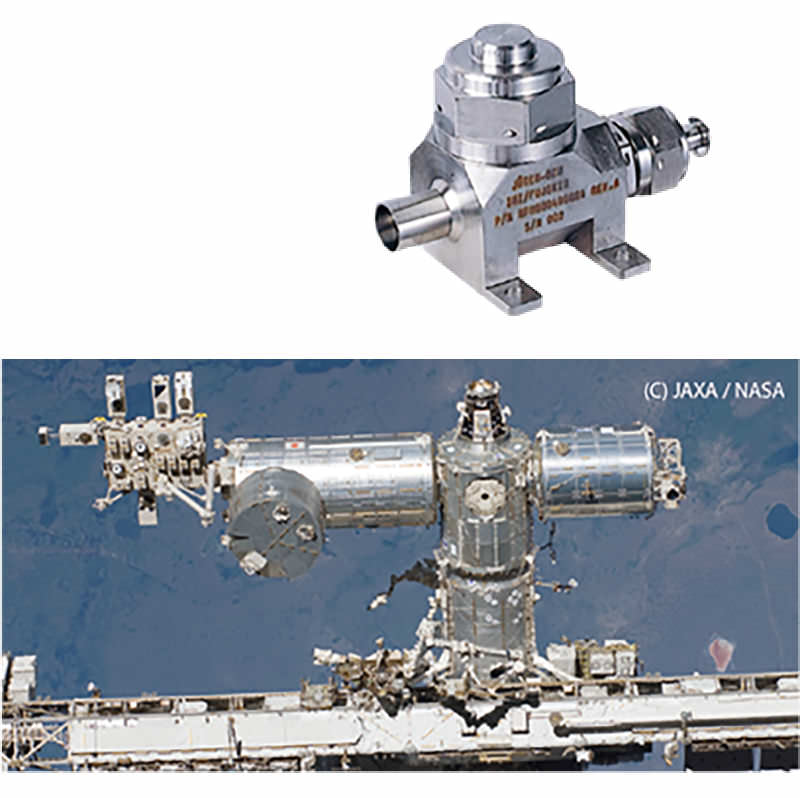 Satellite engine fuel isolation valve / Manned space experiment module "Kibo"
Satellite engine fuel isolation valve / Manned space experiment module "Kibo"
The environment in which valve equipment is used is extremely harsh. To launch a satellite into orbit, a speed of 7.9 km/s is required, which is equal to 28,000 km/h, and during launch time, a large amount of energy and vibrations are generated. Furthermore, there is almost no gravity or atmosphere in outer space, and there is constant radiation. Fujikin's products are built to endure such harsh environments.
In 2007, Fujikin received a letter of thanks from JAXA for our extensive contributions to the development and launch of the H-IIA Rocket, which is said to be among the world's top rockets in terms of technology and economy; it acknowledged our outstanding technological strength and reliability.
Continuing on from the H-IIA Rocket, a new model H3 rocket is a certainty and for securing new resources for the future of mankind, Fujikin's contributions are expected to play an even greater role in the increasingly important field of space exploration.
